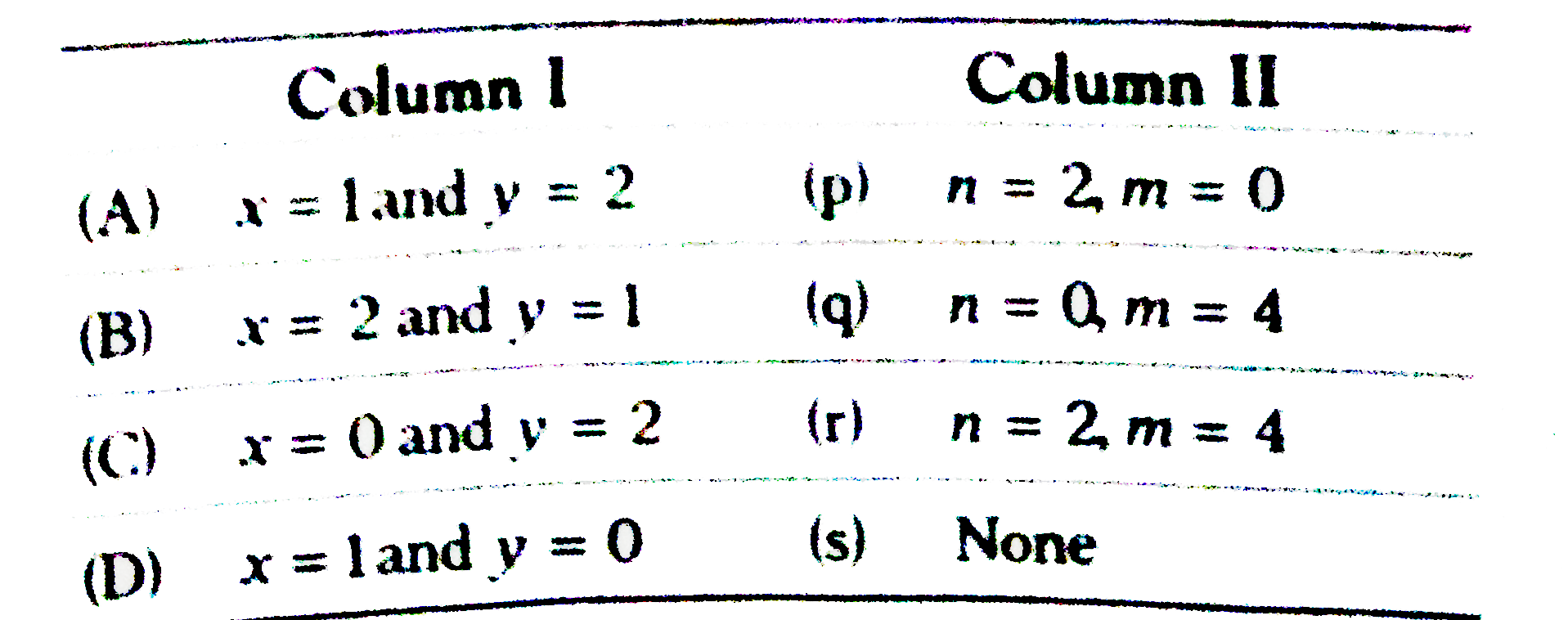The number of beta particles emitter by radioactive sustance is twice the number of alpha particles emitter by it. The resulting daughter is an
Isobar of parent
isomer of parent
isoton of parent
isotope of parent
The correct Answer is:D
To solve the problem, we need to analyze the decay process of the radioactive substance that emits alpha and beta particles. Let's break down the steps:
Step 1: Understand the Decay Process
1. Identify the initial nucleus: Let’s denote the initial nucleus as A (mass number) and Z (atomic number), represented as AXZ.
2. Alpha decay: An alpha particle consists of 2 protons and 2 neutrons. When an alpha particle is emitted, the mass number decreases by 4 and the atomic number decreases by 2. Thus, after emitting one alpha particle, the new nucleus will be A−4 and Z−2, represented as A−4,Z−2.
Step 2: Beta Decay
1. Beta decay: A beta particle is an electron emitted from the nucleus when a neutron converts into a proton. This process increases the atomic number by 1 while keeping the mass number the same.
2. Number of beta particles emitted: According to the problem, the number of beta particles emitted is twice the number of alpha particles emitted. Since we emitted 1 alpha particle, we will emit 2 beta particles.
3. After emitting 2 beta particles: Each beta decay increases the atomic number by 1. Therefore, after emitting 2 beta particles, the atomic number will increase by 2. The new nucleus will be A−4 (mass number remains the same) and Z−2+2 (atomic number increases by 2), which simplifies to A−4,Z.
Step 3: Resulting Daughter Nucleus
1. Final representation: The resulting daughter nucleus after the decay process will be represented as A−4,Z.
2. Conclusion: The daughter nucleus is a new element with the same atomic number Z but a mass number A−4.
Final Answer
The resulting daughter nucleus is A−4,Z.
---
1. Identify the initial nucleus: Let’s denote the initial nucleus as A (mass number) and Z (atomic number), represented as AXZ.
2. Alpha decay: An alpha particle consists of 2 protons and 2 neutrons. When an alpha particle is emitted, the mass number decreases by 4 and the atomic number decreases by 2. Thus, after emitting one alpha particle, the new nucleus will be A−4 and Z−2, represented as A−4,Z−2.
1. Beta decay: A beta particle is an electron emitted from the nucleus when a neutron converts into a proton. This process increases the atomic number by 1 while keeping the mass number the same.
2. Number of beta particles emitted: According to the problem, the number of beta particles emitted is twice the number of alpha particles emitted. Since we emitted 1 alpha particle, we will emit 2 beta particles.
3. After emitting 2 beta particles: Each beta decay increases the atomic number by 1. Therefore, after emitting 2 beta particles, the atomic number will increase by 2. The new nucleus will be A−4 (mass number remains the same) and Z−2+2 (atomic number increases by 2), which simplifies to A−4,Z.
1. Final representation: The resulting daughter nucleus after the decay process will be represented as A−4,Z.
2. Conclusion: The daughter nucleus is a new element with the same atomic number Z but a mass number A−4.
The resulting daughter nucleus is A−4,Z.
Topper's Solved these Questions
- SEMICONDUCTOR ELECTRONICSBOOK - A2ZCHAPTER - SEMICONDUCTOR ELECTRONICSEXERCISE - AIIMS Questions
38 Videos
- SEMICONDUCTOR ELECTRONICSBOOK - A2ZCHAPTER - SEMICONDUCTOR ELECTRONICSEXERCISE - Assertion Reason
18 Videos
- SEMICONDUCTOR ELECTRONICSBOOK - A2ZCHAPTER - SEMICONDUCTOR ELECTRONICSEXERCISE - Section B - Assertion Reasoning
22 Videos
- NUCLEAR PHYSICSBOOK - A2ZCHAPTER - NUCLEAR PHYSICSEXERCISE - Section D - Chapter End Test
29 Videos
- SOURCE AND EFFECT OF MAGNETIC FIELDBOOK - A2ZCHAPTER - SOURCE AND EFFECT OF MAGNETIC FIELDEXERCISE - Section D - Chapter End Test
30 Videos
Similar Questions
The number of beta particles emitted by a radioactive substance is twice the number of alpha particles emittedby it. The resulting daughter in an:
View SolutionFrom a radioactive substance x numbers of α-particles any y numbers of β-particles are emitted. As a result atomic number decreases by n and mass number by m. Then, match the following two columns.

View Solution
Knowledge Check
β-particle is emitted in radioactivity by
AConversion of proton into neutronBfrom outermost orbitCconversion of neutron into protonDβ-particle is not emittedβ-particle is emitted in radioactivity by
AConversion of proton to neutronBFrom outermost orbitCConversion of neutron to protonDβ−particle is not emittedβ - particle is emitted in radioactivity by
Aconversion of proton to neutonBfrom outermost orbitCconversion of neutron to protonDnone of these.
α-particles and β-particles
View Solutionβ− particle in radioactivity is emitted by:
View SolutionA β− particle is emitted by a radioactive nucleus at the time of conversion of a:
View SolutionWhat are the respective number of α and β-particles emitted in the following radioactive decay?
View SolutionA nucleus .mnX emits one α−particle and two β−particles. The resulting nucleus is
View Solution
